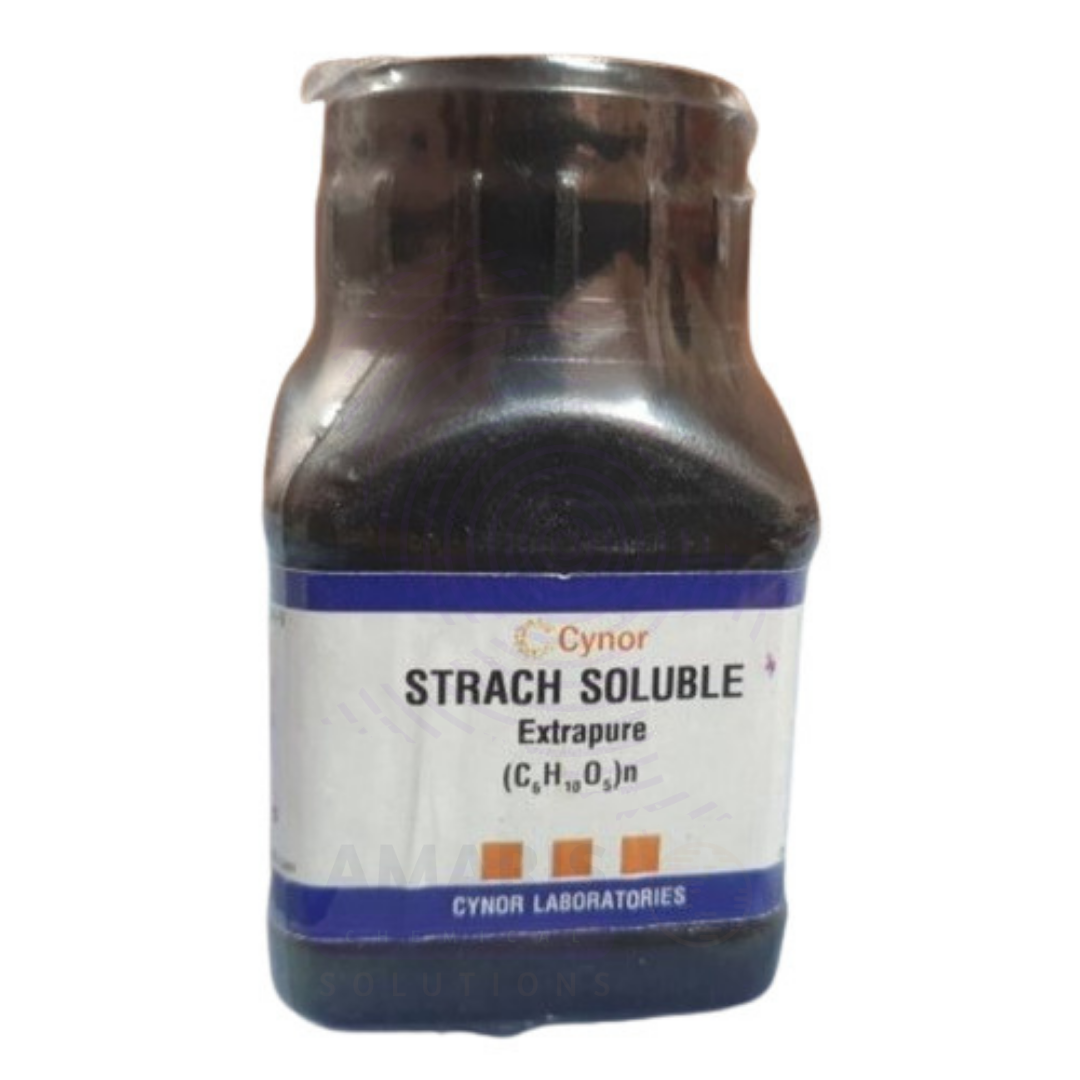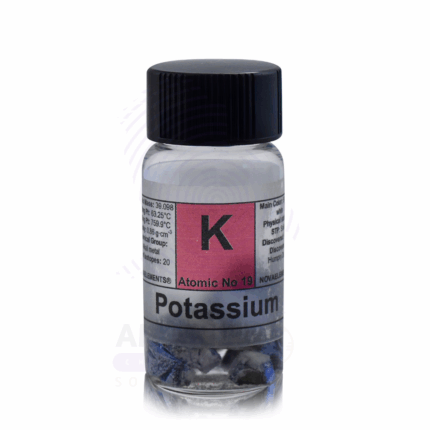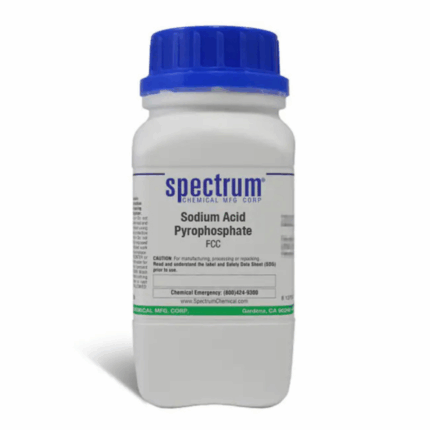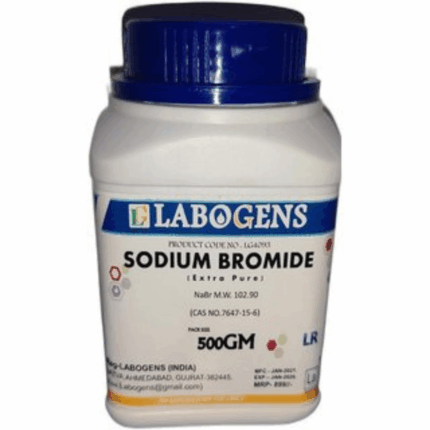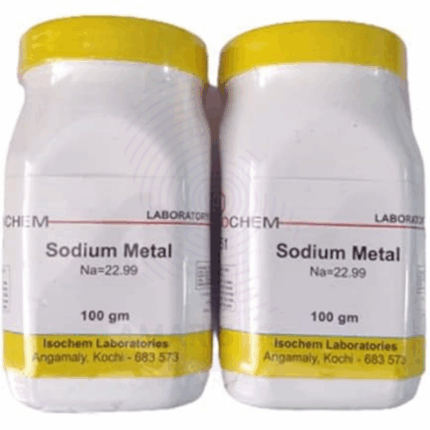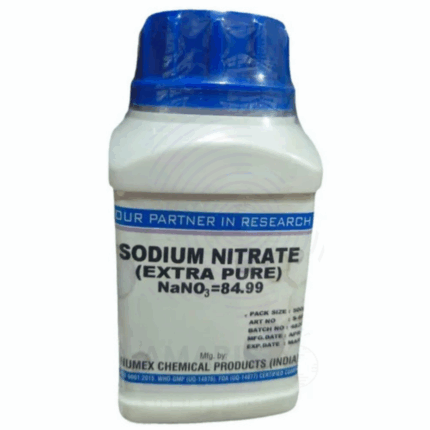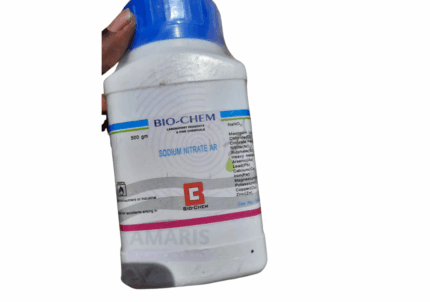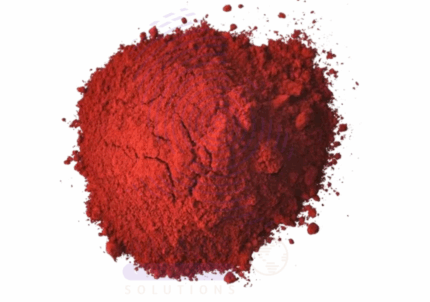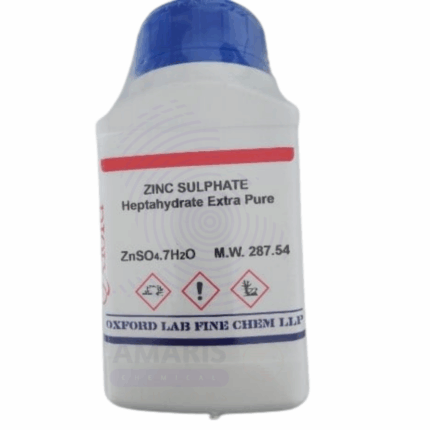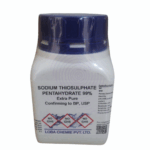
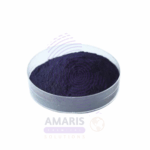
Soluble Starch Powder Extra Pure
$ 18.00 Original price was: $ 18.00.$ 17.87Current price is: $ 17.87.
Soluble Starch Powder Extra Pure is a fine, white to off-white powder derived from natural starch. It dissolves readily in hot water forming viscous solutions and is widely used as a thickener, binder, and stabilizer in laboratory, pharmaceutical, and food industries. Its Extra Pure grade ensures high purity suitable for analytical and formulation purposes. It is also utilized as an indicator in iodine titrations and in microbiological media preparation. Proper storage in a dry, cool environment and handling with dust protection are recommended to maintain quality and safety.
Soluble Starch Powder Extra Pure
PRIMARY USES
- Analytical Reagent & Laboratory Applications:
Used as a complexometric indicator for iodine in titrations
• Serves as a stabilizer and medium for enzyme reactions in biochemical assays
• Employed in microbiology for culture media preparation and as a nutrient source - Pharmaceutical Industry:
Used as a binder and disintegrant in tablet formulations
• Acts as a stabilizer for pharmaceutical suspensions and emulsions - Food Industry:
Used as a thickening agent, stabilizer, and binder in various food products
• Acts as a source of carbohydrates in food formulations
SECONDARY USES
- Textile Industry:
Utilized in sizing and finishing to improve fabric texture and strength - Cosmetic Industry:
Used in powders and creams as an absorbent and texture enhancer
1. Basic Identification Attributes
- Chemical Name: Soluble Starch Powder
• CAS Number: 9005-25-8
• HS Code: 1108.13.00
• Molecular Formula: (C6H10O5)n (polymer)
• Synonyms:
- Water-soluble starch
- Soluble starch
2. Physical & Chemical Properties
- Physical State: Fine powder
• Color & Odor: White to off-white, odorless
• Melting Point: Decomposes before melting
• Density: Approximately 1.5 g/cm³
• Solubility: - Soluble in hot water forming viscous solutions
- Insoluble in cold water without gelatinization
• pH Level: Neutral to slightly acidic (~6-7 in solution)
• Vapor Pressure: Not applicable
• Flash Point: Not flammable
3. Safety & Hazard Attributes
Hazard Class (GHS Classification):
- Generally regarded as safe; may cause respiratory irritation if inhaled as dust
• NFPA Ratings: - Health: 1
- Flammability: 1 (dust can be combustible)
- Reactivity: 0
• Exposure Limits: - No specific OSHA PEL or ACGIH TLV established
• Reactivity: - Stable under normal conditions
- Avoid exposure to strong oxidizers and acids
4. Storage & Handling Attributes
Storage Conditions:
- Store in a cool, dry place away from moisture and contaminants
- Keep container tightly closed
• Incompatible Materials: - Strong acids, oxidizers, and moisture
• Container Type: - Plastic or sealed paper bags recommended
• Shelf Life: - Stable for several years if stored properly
• Special Handling Requirements: - Avoid dust formation and inhalation
- Use protective gloves and dust mask
5. Regulatory & Compliance Attributes
Regulatory Status:
- Generally recognized as safe (GRAS) for food use
- Approved for pharmaceutical and laboratory use
• Transportation Restrictions: - Not classified as hazardous for transport
• Waste Disposal Method: - Dispose in accordance with local regulations
6. Environmental & Health Impact
Ecotoxicity:
- Biodegradable, low environmental impact
• Persistence in Environment: - Readily biodegradable in aquatic and soil environments
• Carcinogenicity/Mutagenicity: - Not classified as carcinogenic or mutagenic
• Biodegradability: - Biodegradable
SAFETY PRECAUTIONS
Personal Protective Equipment (PPE):
• Wear dust mask when handling powder
• Use safety goggles to prevent eye contact
• Wear gloves and protective clothing
Handling:
• Handle in well-ventilated area
• Avoid inhalation of dust
• Avoid contact with skin and eyes
• Wash hands after handling
Storage:
• Store in a tightly sealed container
• Keep in a dry, cool, well-ventilated place
• Protect from moisture and contaminants
FIRST AID MEASURES
Inhalation:
• Move to fresh air immediately
• Seek medical attention if irritation persists
Skin Contact:
• Wash skin with soap and water
• Remove contaminated clothing
• Seek medical advice if irritation occurs
Eye Contact:
• Rinse eyes with plenty of water for at least 15 minutes
• Seek medical attention if irritation persists
Ingestion:
• Rinse mouth with water
• Seek medical advice if symptoms appear
FIRE FIGHTING MEASURES
Flammability:
• Combustible dust; avoid dust cloud formation
Extinguishing Media:
• Use water spray, foam, dry chemical, or CO₂ extinguisher
Hazardous Combustion Products:
• May release carbon monoxide and carbon dioxide upon combustion
Firefighter Protection:
• Wear self-contained breathing apparatus (SCBA) and full protective gear


 Preservatives(food)
Preservatives(food) Flavor Enhancers
Flavor Enhancers Acidulants
Acidulants Sweeteners
Sweeteners Antioxidants
Antioxidants Colorants(food)
Colorants(food) Nutraceutical Ingredients (food)
Nutraceutical Ingredients (food) Nutrient Supplements
Nutrient Supplements Emulsifiers
Emulsifiers
 Collectors
Collectors Dust Suppressants
Dust Suppressants Explosives and Blasting Agents
Explosives and Blasting Agents Flocculants and Coagulants
Flocculants and Coagulants Frothers
Frothers Leaching Agents
Leaching Agents pH Modifiers
pH Modifiers Precious Metal Extraction Agents
Precious Metal Extraction Agents
 Antioxidants(plastic)
Antioxidants(plastic) Colorants (Pigments, Dyes)
Colorants (Pigments, Dyes) Fillers and Reinforcements
Fillers and Reinforcements Flame Retardants
Flame Retardants Monomers
Monomers Plasticizers
Plasticizers Polymerization Initiators
Polymerization Initiators Stabilizers (UV, Heat)
Stabilizers (UV, Heat)
 Antifoaming Agents
Antifoaming Agents Chelating Agents
Chelating Agents Coagulants and Flocculants
Coagulants and Flocculants Corrosion Inhibitors
Corrosion Inhibitors Disinfectants and Biocides
Disinfectants and Biocides Oxidizing Agents
Oxidizing Agents pH Adjusters
pH Adjusters Scale Inhibitors( water)
Scale Inhibitors( water)
 Antioxidants(cosmetic)
Antioxidants(cosmetic) Emollients
Emollients Fragrances and Essential Oils
Fragrances and Essential Oils Humectants
Humectants Preservatives
Preservatives Surfactants(cosmetic)
Surfactants(cosmetic) Thickeners
Thickeners UV Filters
UV Filters
 Fertilizers
Fertilizers Soil Conditioners
Soil Conditioners Plant Growth Regulators
Plant Growth Regulators Animal Feed Additives
Animal Feed Additives Biostimulants
Biostimulants Pesticides (Herbicides, Insecticides, Fungicides)
Pesticides (Herbicides, Insecticides, Fungicides)
 Active Pharmaceutical Ingredients (APIs)
Active Pharmaceutical Ingredients (APIs) Excipients
Excipients Solvents(pharmaceutical)
Solvents(pharmaceutical) Antibiotics
Antibiotics Antiseptics and Disinfectants
Antiseptics and Disinfectants Vaccine Adjuvants
Vaccine Adjuvants Nutraceutical Ingredients (pharmaceutical)
Nutraceutical Ingredients (pharmaceutical) Analgesics & Antipyretics
Analgesics & Antipyretics
 Analytical Reagents
Analytical Reagents Solvents(lab)
Solvents(lab) Chromatography Chemicals
Chromatography Chemicals Spectroscopy Reagents
Spectroscopy Reagents microbiology-and-cell-culture-reagents
microbiology-and-cell-culture-reagents Molecular Biology Reagents
Molecular Biology Reagents Biochemical Reagents
Biochemical Reagents Inorganic and Organic Standards
Inorganic and Organic Standards Laboratory Safety Chemicals
Laboratory Safety Chemicals Specialty Laboratory Chemicals(Special Laboratory Equipment)
Specialty Laboratory Chemicals(Special Laboratory Equipment)
 Demulsifiers
Demulsifiers Hydraulic Fracturing Fluids
Hydraulic Fracturing Fluids Scale Inhibitors(oil)
Scale Inhibitors(oil) Surfactants(oil)
Surfactants(oil) Drilling Fluids
Drilling Fluids
 Dyes and Pigments
Dyes and Pigments Bleaching Agents
Bleaching Agents Softening Agents
Softening Agents Finishing Agents
Finishing Agents Antistatic Agents
Antistatic Agents
 Admixtures
Admixtures Waterproofing Agents
Waterproofing Agents Sealants and Adhesives
Sealants and Adhesives Curing Compounds
Curing Compounds Concrete Repair Chemicals
Concrete Repair Chemicals Anti-Corrosion Coatings
Anti-Corrosion Coatings
 Surfactants(cleaning)
Surfactants(cleaning) Builders
Builders Enzymes
Enzymes Solvents (Cleaning)
Solvents (Cleaning) Fragrances
Fragrances
 Electronic Chemicals
Electronic Chemicals Catalysts
Catalysts Lubricants
Lubricants Photographic Chemicals
Photographic Chemicals Refrigerants
Refrigerants Automotive chemicals
Automotive chemicals Pyrotechnic Chemicals
Pyrotechnic Chemicals
 Biodegradable Surfactants
Biodegradable Surfactants Bio-based Solvents
Bio-based Solvents Renewable Polymers
Renewable Polymers Carbon Capture Chemicals
Carbon Capture Chemicals Wastewater Treatment Chemicals
Wastewater Treatment Chemicals
 Pigments
Pigments Solvents(paint)
Solvents(paint) Specialty Coatings
Specialty Coatings Binders/Resins
Binders/Resins Additives
Additives Driers
Driers Anti-Corrosion Agents
Anti-Corrosion Agents Functional Coatings
Functional Coatings Application-Specific Coatings
Application-Specific Coatings
 Fresh Herbs
Fresh Herbs Ground Spices
Ground Spices Whole Spices
Whole Spices Spice Blends
Spice Blends Dried Herbs
Dried Herbs
 Leavening Agents
Leavening Agents Dough Conditioners
Dough Conditioners Flour Treatments
Flour Treatments Fat Replacers
Fat Replacers Decoratives
Decoratives Preservatives(baking)
Preservatives(baking)
 Plasticizers & Softeners
Plasticizers & Softeners Reinforcing Agents
Reinforcing Agents Adhesion Promoters
Adhesion Promoters Vulcanizing Agents
Vulcanizing Agents Antidegradants
Antidegradants Blowing Agents
Blowing Agents Fillers & Extenders
Fillers & Extenders Accelerators & Retarders
Accelerators & Retarders